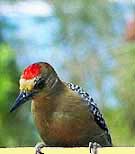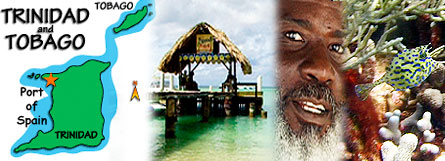|
||||||
|
Natural Wonders of Tobago |
|
Adventure Farm & Nature Reserve |
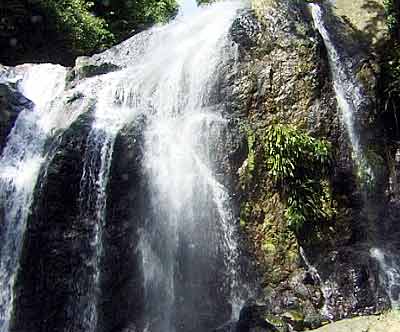 |
Argyle Waterfalls: Located near Roxborough, the Argyle Waterfalls are Tobago's highest waterfalls, tumbling in a series of stepped cascades some 54m (175ft). Admission is TT$20 and you are required to hire a local guide at a cost TT$15. Official guides can be found at the entrance from the Windward Road and in the parking area, but don't forget to ask to see their badge. It is a 15-20 minute nature walk from the parking area to the actual falls. There are deep cool pools for swimming. At 175ft, the Argyle falls are the highest in Tobago. Chris and I paid our admission at the guide hut sited at the entrance (TT$20) and paid another TT$15 for our |
|
official guide who proved invaluable on our guided tour of the ecology of the region as we made our way to the falls. The climb is fairly steep in places but worth the effort. several pools at the base of the falls provide bathing, and we joined in the fun. |
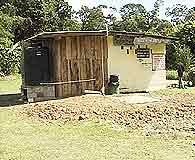 |
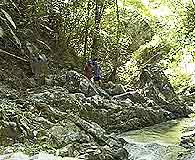 |
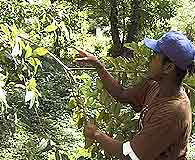 |
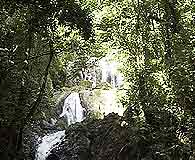 |
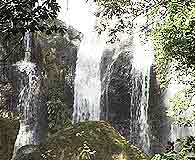 |
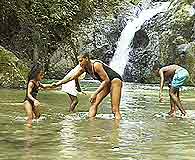 |
|
Arnos Vale: A former sugar plantation, famous for being Princess Margaret's Honeymoon hotel. Tea at 4pm is a birder's treat, and I filmed scores of different species eating out of the food station provided by the hotel. Set against the stunning backdrop of the coast below, this Bananaquit enjoys it's afternoon treat at the Arnos Vale feeding station. Staff set out the food around 4.00pm ready for the guests to enjoy. I counted at least 10 different species of birds flying in from the wood around the estate, darting in to take their offerings of bread and fruit before returning to their roosting habitats. |
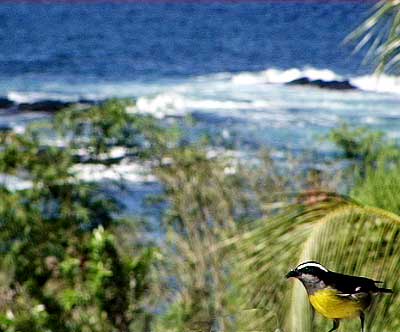 |
|
Just up the road from the hotel,
the Arnos Vale Waterwheel dating from 1857 is still intact and is now the
centrepiece of a nature park. Ruins of the sugar factory that the
waterwheel once powered can still be seen. Facilities include a
restaurant, museum, gift shop and a small theatre. There are a number of
nature trails, an Amerindian site and an old slave village. The park is
open daily from 8am until 11pm and admission is TT$10. |
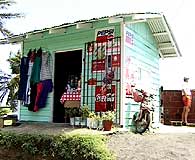 |
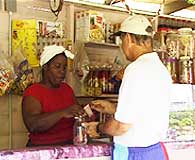 |
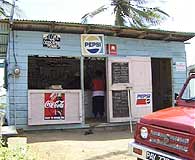 |
|
As you travel around Tobago you will need refreshing, and where better than these delightful little shops where you can buy fruit, sweets or a cool drink to help you on your way. Don't forget to take local currency though, ($TT) as the cash amounts are usually quite small. (Unless you spend a lot). |
|
Buccoo Reef: A protected marine park, Buccoo Reef is Tobago's most famous reef and is located off Pigeon Point. Glass bottom boat trips are available from various points, including Store Bay, Pigeon Point and Buccoo village, and Chris and I took one such tour, which included snorkelling on the reef (we saw several large Angel fish which were beautiful, but the reef itself has largely been destroyed by uncontrolled sightseeing over the years). We landed for lunch cooked over a BBQ and danced (not with each other!) with some of the other passengers on the trip, took a jet ski ride around the lagoon, before returning to Store Bay. |
 |
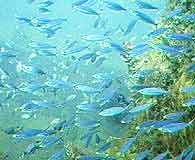 |
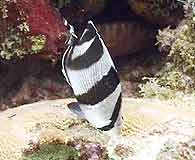 |
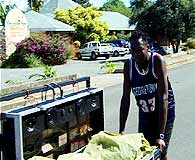 |
Buccoo Village: A small village best known for its Easter goat and crab races. The village comes totally alive on Sunday nights with the start of "Sunday School", which is a loud, vibrant street party and an ideal way of sampling one aspect of Tobagonian social life. It starts at 8pm every Sunday evening when the Buccooneers Steel Band orchestra play pan for a couple of hours, but only really gets into gear about 11pm when the main sound system, which plays across the beach, kicks in. The music is primarily Jamaican Dancehall with the best soca, hip hop and R+B. We went with our guide Harris MacDonald, and although it was lovely to see so many youngsters having a great time, it was too noisy for me. (Well, I am 50ish after all), but Chris had a great time! |
|
Castara:
The villages on the north coast -
Castara, Parlatuvier, Bloody Bay and L'Anse Fourmi - are extremely picturesque
with small houses and sheltered blue bays and stunning scenery. Charlotteville: A small unspoilt fishing village, useful as a diving base. Some 60% of the entire island's fishing catch comes from Charlotteville. The village has become a customs and immigration entry point in recent years, so tourist yachts now frequent the bay. |
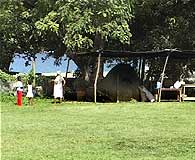 |
 |
Flagstaff Hill:
Located at the northern tip of the
island, it served as an American military lookout and radio tower during World
War II. The panoramic view at the top of the hill is breathtaking. The St.
Giles' Islands can be seen (where the Atlantic Ocean meets the Caribbean Sea) as
well as the tiny fishing village of Charlotteville. |
|
Fort Granby: Fort Granby was built in 1768 to protect the island's short-lived capital of Georgetown. There are no traces of the fort left, except the gravestone of a young soldier. The grave is set on a pretty wooded headland with nice views and benches are provided under the trees. Nearby is the Dry Dock Pub - a restaurant made from a converted boat, the Marquis of Granby. |
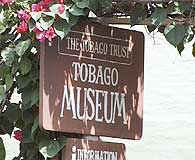 |
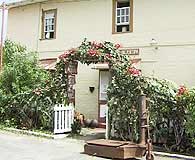 |
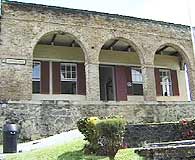 |
|
Fort King George:
Just a short hop from Scarborough, the remains of
Fort King George remain one of Tobago's best preserved monuments. The
approaches to the fort take you past the current hospital and the prison.
The fort itself was built in the 1770's and the cannons remain as they
were, overlooking the coast. The prisoner's bell tank, barracks and
officer's mess can still be seen. |
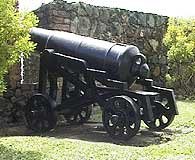 |
|
Fort Milford: On the westernmost tip of the island, next to the runway at Crown Point airport, only a few cannons and crumbling walls remain of this ancient fort. |
